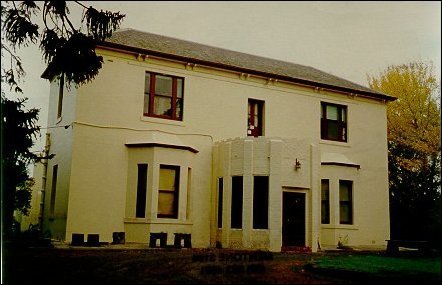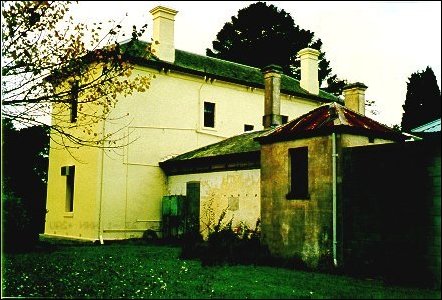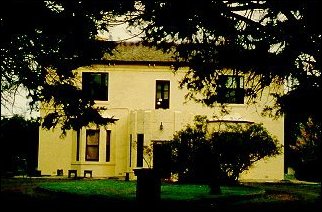Mayfield: A Rural Mansion

Mayfield 1999.
The first house on the property on the southwest corner of what is now Lower Dandenong and Boundary Roads was built by Jonathan Parker. He had acquired the land in 1855 and sold it to Count de Castelnau nineteen years later.
Under the ownership of Count de Castelnau, it was rated as a six-roomed house on 654 acres with a value of £150. By 1876, the house was described as having twelve rooms, but with only a small increase in the Net Annual Value. This implies that the construction of the house spanned several years, ie. between 1874 and 1876. The somewhat restrained architectural style of the house supports the contention that it dates from the mid-1870s.
In 1918 the house was described as a ten-roomed brick residence on 156 acres. According to the Mordialloc Rate Books throughout the 1920s and 1930s, the population of the house varied during this time. In 1921, there were seven people living there, dropping to six in 1924, and then to five in 1925. This figure remained constant until 1935, when the population increased to six occupants.
Today Mayfield is seen as a double-story symmetrical Italianate rendered brick mansion, with a hipped slate roof that is supported on pairs of consoles at the eaves line. The rear slope of the roof is penetrated by a pair of rendered chimneys with moulded caps.
The principal facade has a central single-storey porch at the ground level, flanked by a pair of canted bay windows with moulded cornices. The porch has a flat roof which forms a small balcony at the upper level, accessed by a narrow door. This is flanked by a pair of windows with moulded sills, containing timber-framed double-hung sashes with sidelights.

Mayfield from the south-west.
The rear facade has a series of small windows with timber-framed double-hung sashes. Projecting from the rear of the house is a single-storey service wing. It is also of brick construction, although the rendered finish is unpainted. The wing has two broad hipped slate roofs, each penetrated by a slender chimney with moulded caps. There are a number of timber doors and timber-framed double-hung windows.
Also at the rear of the house is an outbuilding which appears to date from the early twentieth century. It is a single-storey masonry building, possibly of concrete, with hipped corrugated iron roof and a red brick chimney which has been cut off at the eaves line.
There are a number of other outbuildings around the site, most of which appear to date from the 1960’s and later, and would have been erected by the current owners.
The house sits in a densely landscaped setting with some well-established trees.

North facade 1999.
Footnotes
- Photographs: Courtesy Stephen Calvert-Smith.
